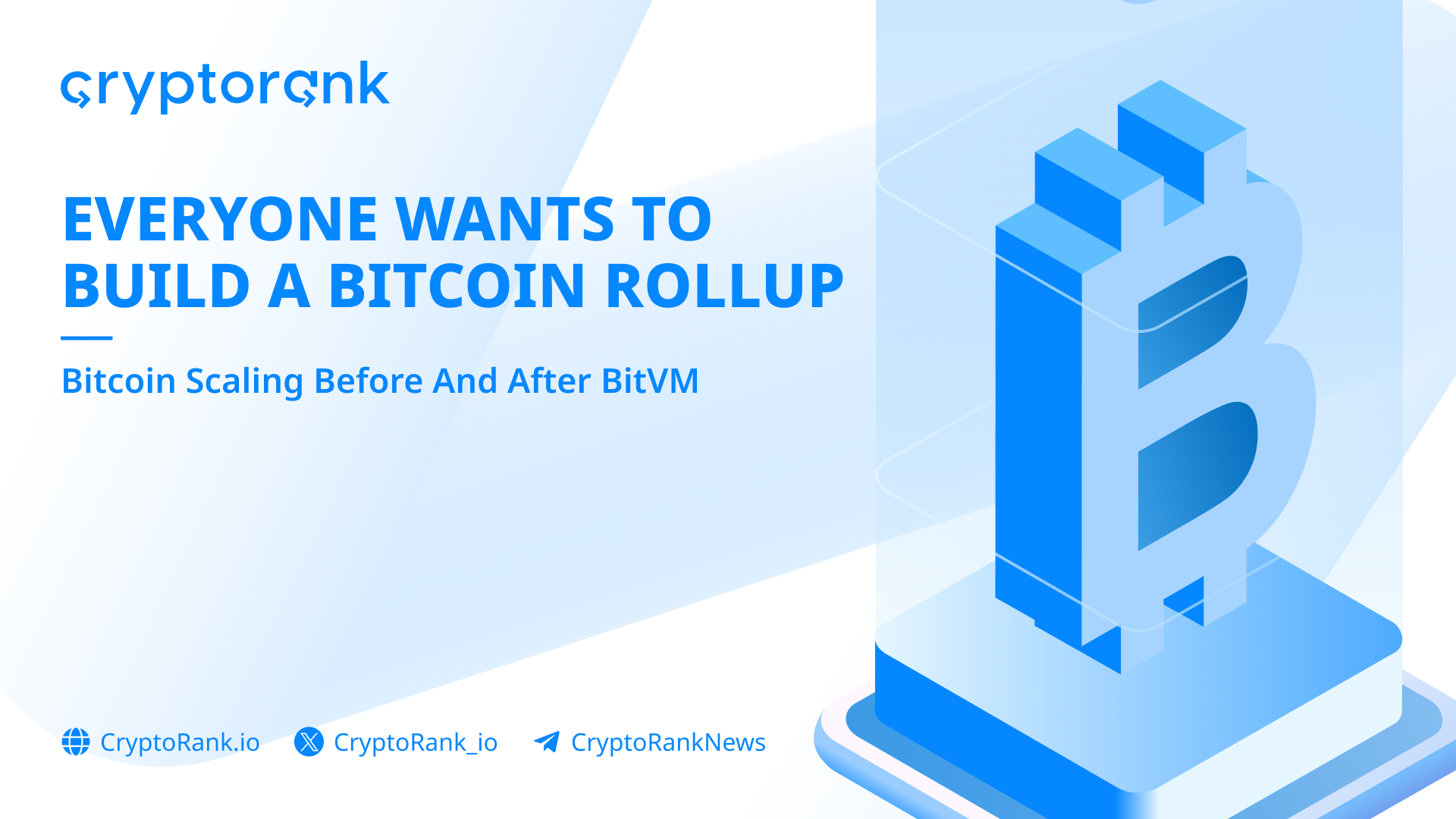Bitcoin Runes: How to Get in Early When You Are a Bit Late?
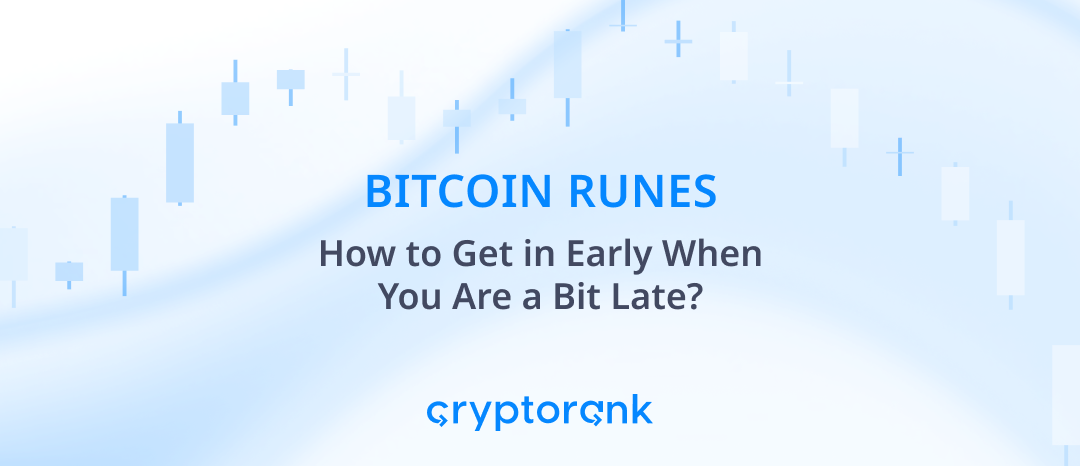

Architectural Features of Bitcoin, or What Is BRC-20's Problem?
While Ethereum operates with the account-based model, Bitcoin uses the Unspent Transaction Output (UTXO) model to manage transactions, where each transaction consists of inputs and outputs. During a transaction, inputs are deleted, and new outputs are created. These new outputs, referred to as UTXOs, are the balance that hasn't been spent and can be used in subsequent transactions. Essentially, UTXOs represent the Bitcoins that remain available in a wallet after transactions are completed. Here's a detailed article on how it works.
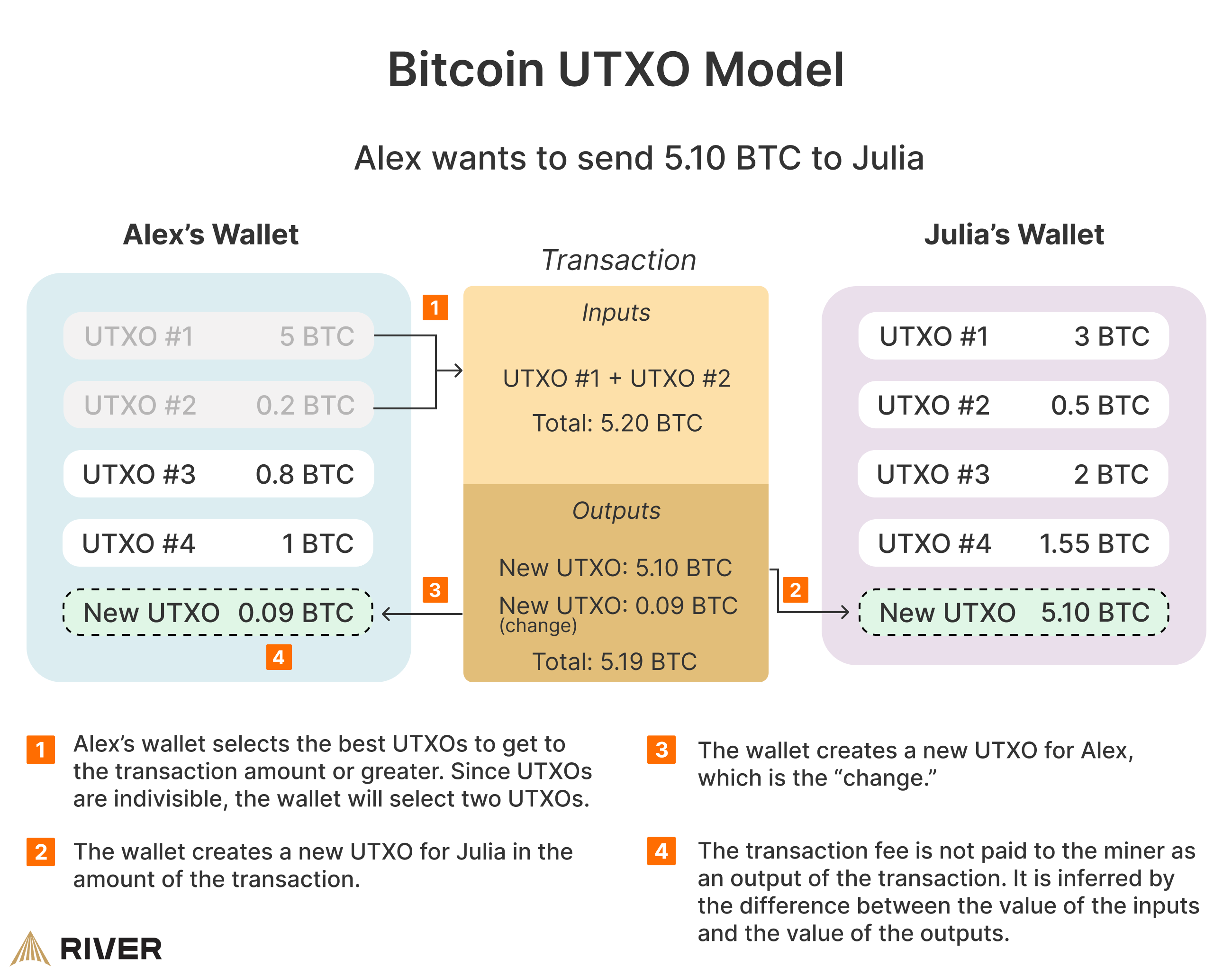
This system is crucial for Bitcoin because it provides a secure way to track ownership and prevent the double-spending of Bitcoins. Each UTXO can only be spent once, and all nodes in the Bitcoin network verify transactions by ensuring that UTXOs are not spent twice, maintaining the integrity and security of the blockchain.
The BRC-20 standard introduced the creation of Bitcoin-native fungible tokens but faced major issues with UTXO management, leading to an overabundance of junk transactions, congesting the network. These complicate the processing of other transactions and can lead to higher fees, as more data needs to be managed per transaction. To address this issue, Runes were introduced.
What Are Runes?
Runes have emerged as a better token standard for fungible tokens within the Bitcoin blockchain; Runes are created and managed by the Runes protocol on top of Bitcoin. This new protocol was proposed in September 2023 by Casey Rodarmor, the creator of Ordinals. The Runes protocol operates through a series of digital messages known as Runestones, which facilitate the creation (etching), production (minting), and transfer of tokens within Bitcoin transactions. These Runestones are embedded in Bitcoin transactions using the OP_RETURN function, a method for recording data on the blockchain. This process ensures that Runes can be handled with the same level of security as Bitcoin transactions.
So, you can:
-
Etch Runes. You can create a new Rune, determining its name, divisibility, and symbol.
-
Mint Runes. Once a Rune is etched, you can multiply it through minting.
-
Transfer Runes. You can transfer Runes to other users through standard Bitcoin transactions.
Runes vs BRC-20
Runes and BRC-20 tokens offer distinct approaches to token standards on the Bitcoin blockchain. Let's go over the main differences.
Bitcoin Integration
Runes, operating on a UTXO-based model, integrate seamlessly with Bitcoin's existing transaction system, relying on its security. In contrast, BRC-20 tokens rely on off-chain data and can create excess UTXOs.
Operational Efficiency
Runes use a minimal blockchain space, avoiding the UTXO proliferation common with BRC-20 tokens, thus enhancing transaction speed. Meanwhile, BRC-20’s creation process can lead to inefficiencies and increased network congestion by generating unnecessary UTXOs.
Error Handling
Runes handle transaction errors by burning tokens involved in errors (cenotaphs), emphasizing better UTXO management but also posing a risk of token loss. BRC-20 tokens, however, allow for error correction, offering flexibility at the expense of network congestion.
Layer 2s Compatibility
Unlike the BRC-20 token standard, Runes have the capability to be transmitted over the Lightning Network. This further suggests that Runes will be much more compatible with the upcoming Bitcoin rollups.
Is There Any Utility?
At the moment of writing, there is no value in Runes, except speculative ones; there is nothing to create on top of Runes protocol except etching Runes itself. So, there is no utility. Not yet, at least. Runes are essentially the new memecoin standard on Bitcoin, with BRC-20 being the older one.
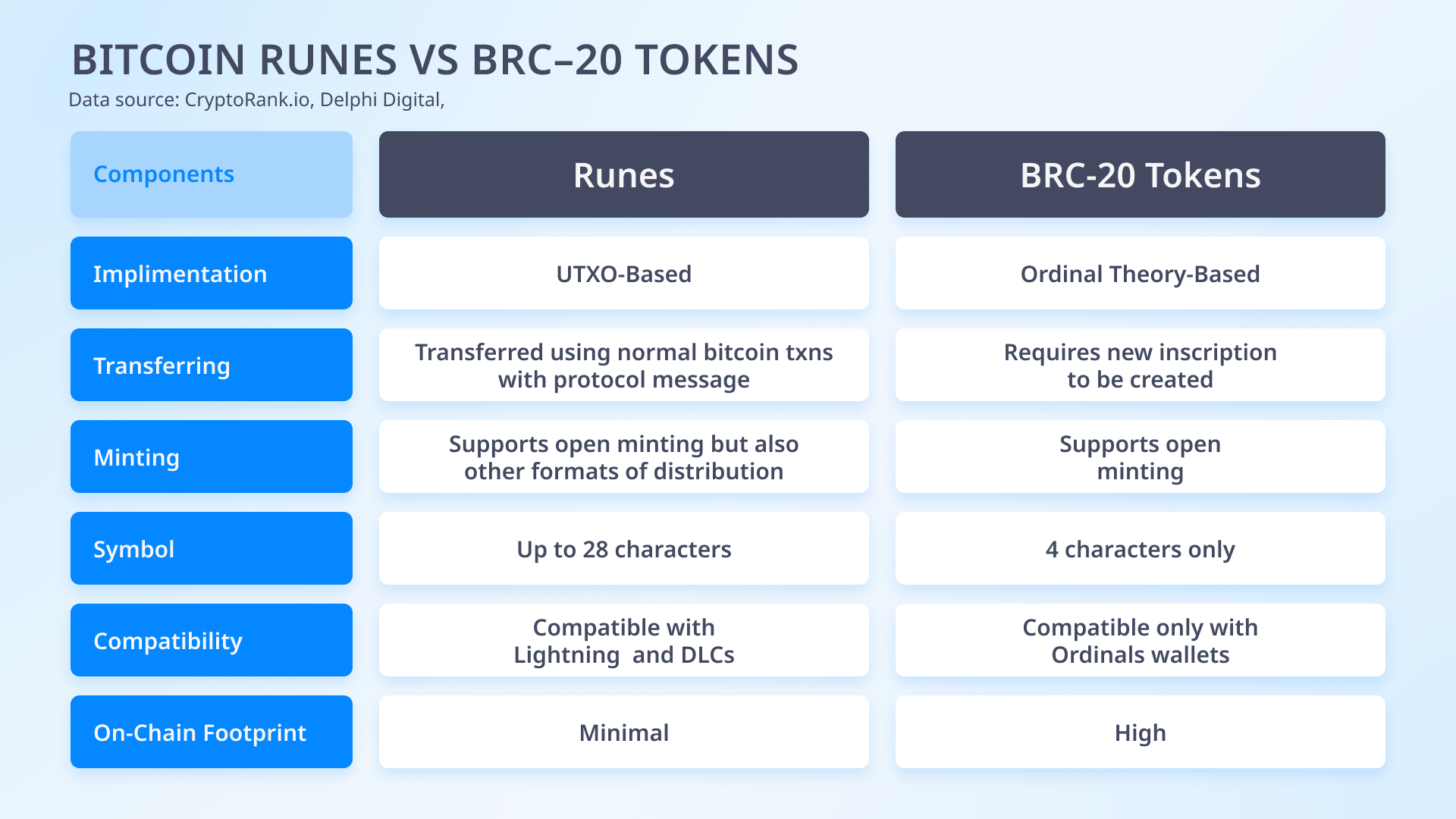
How to Get in?
The Runes protocol mainnet was activated on April 19, 2024, following the Bitcoin halving event at block 840,000. And there were a bunch of airdrops for Runestones, Ordinals, etc. But if you're reading this, you're too late to be early for that. But that doesn't mean you're late entirely and can't do something out of the hype. Since Runes are essentially memes, they become outdated faster than the author writes these lines, and there is no point in talking about promising Runes. What does make some sense is to look at the infrastructure being built around Runes.
Most existing Bitcoin scaling protocols will want to participate in the Runes hype one way or another and take the chance to attract users to their platforms.
Top projects, building infrastructure around Runes:
-
Magic Eden. Magic Eden is the largest NFT marketplace on the Solana blockchain that successfully expanded to the Bitcoin ecosystem, currently capturing the biggest market share. It allows traders to buy, sell, mint and manage tokens, and it includes a thriving secondary market.
-
Unisat. Unisat is a Bitcoin-oriented DEX and the eponymous wallet for holding, trading $BTC, BRC-20, Runes and domain names.
-
Xverse. Xverse is a non-custodial Bitcoin wallet that supports Bitcoin, its layers and standards built on top such as Stacks, Lightning, BRC-20, and Runes.
-
ALEX Lab. ALEX is the major DeFi hub within Stacks, featuring a DEX with an order book for BRC-20 and Runes token trading, the launchpad, and multiple bridges.
-
Sovryn. Currently, Sovryn is the leading DeFi platform on RSK with $SOV token and $DLLR stablecoin. Recently, the team has announced expanding to Build on Bob chain to offer Runes trading there.
-
Bitcoin Rune. Bitcoin Rune is a protocol, that allows etching, minting services for Runes. Building a marketplace and a DEX as well.
-
Luminex is a Xverse-supported lauchpad, that allows etching Runes and splitting UTXOs to etch multiple Runes with the same wallet.
-
Saturn. Saturn is an orderbook DEX for Bitcoin assets, such as BRC-20 and Runes.
-
Liquidium. Liquidium is a lending protocol that offers borrowing against Ordinals and Runes. There is a point system live.
-
Runessance. Runessance is building a lending protocol for Runes and Bitcoin.
-
RuniGun. RuniGun is a Telegram bot for etching, minting, and managing Runes.
-
RunePro. Building a DEX and etching protocol.
Runes screeners and explorers: SatScreener, Runealpha, Runesmarketcap, Runes terminal.
You can also check out our article on Bitcoin scaling solutions for a deeper dive.
Output
Being essentially another meme standard, Bitcoin Runes still mark an exciting development in the utilization of Bitcoin's blockchain space for more than just $BTC transactions. It embodies a significant step towards the tokenization of Bitcoin blockchain. While both Runes and BRC-20 tokens aim to extend the functionality of the Bitcoin blockchain, they do so in fundamentally different ways. Runes’ integration with Bitcoin's UTXO model offers a more streamlined, efficient, and secure approach, potentially making it a more suitable option for those looking to leverage Bitcoin’s architecture for token issuance and management.
While the market is somewhat overcrowded at the time of Runes' launch, there are still plenty of opportunities to participate in the hype of shiny new coins. DYOR.
Read More
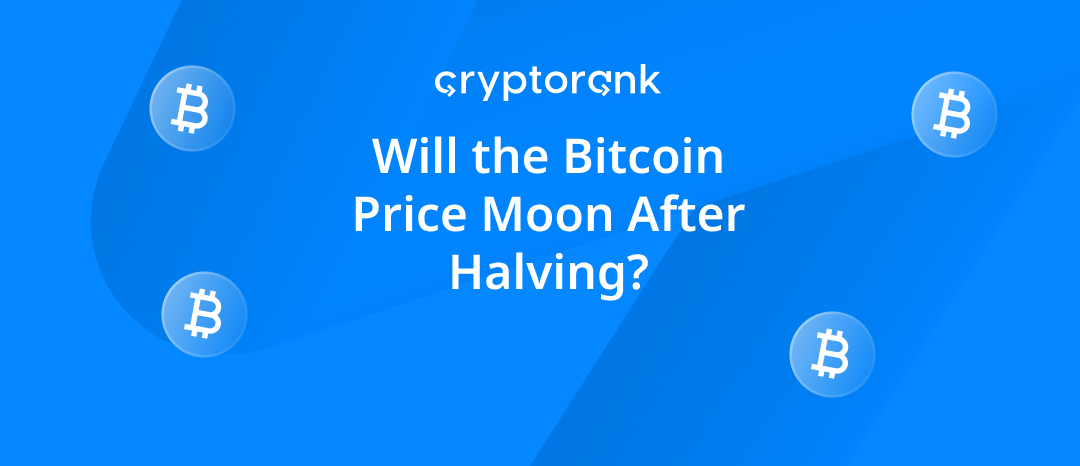
Will the Bitcoin Price Moon After Halving?
